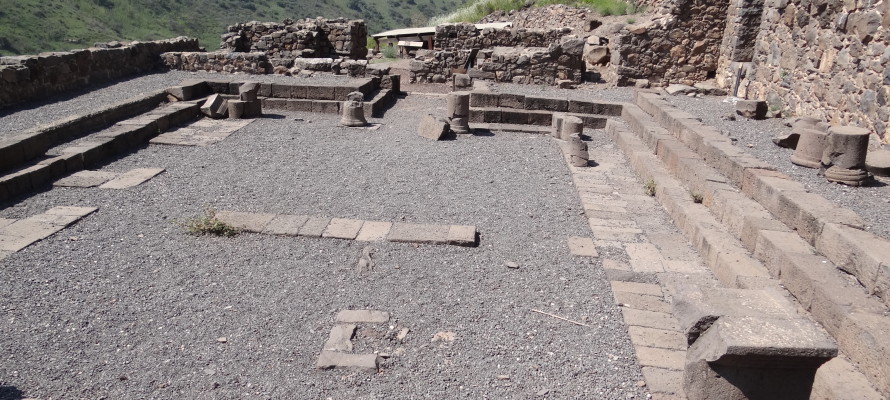
This ancient city is known as the ‘Masada of the North’ and is remembered for the catastrophic defeat suffered by Jewish rebels against the Romans.
Gamla, located on a craggy basalt outcropping in the western Golan Heights, has everything a day tripper could ask for: a dramatic historical backdrop, rugged landscape, along with a wonderful foray into nature.
The city’s Jewish history began in the first century B.C.E. Founded by Hasmonean (Maccabee) King Alexander Janneus between 83 and 80 B.C.E., Gamla was a Jewish town with a population of approximately 5,000 farmers.
One look at the hump-like shape of the hill is enough to understand why it was called ‘Gamla’, which comes from the Hebrew word for ‘camel’.
Gamla was less than 20 years old when, in 66 C. E., the Jews rebelled against the mighty Roman Empire that ruled the country.
Soon afterwards, the Romans conquered the Galilee and most of the Golan Heights. King Agrippa II, a Jew who collaborated with the Romans, besieged Gamla for seven months. His failure to subdue the city led to the Roman assault.
The Roman general Vespasian attacked the city with three Roman legions, and after a month they penetrated the city’s defenses. However, Jewish rebels killed many of the attackers and the Romans withdrew. A few days later, a second breakthrough was made and the Romans succeeded in capturing the city.
Four years after the destruction of Gamla, the Second Temple was destroyed and three years after that Masada fell to the Romans.
Known as the ‘Masada of the North,’ Gamla is famous for its strong defense against the Romans during what became known as the Great Jewish Revolt.
Gamla: Rediscovered after Two Thousand Years
Abandoned after its obliteration, Gamla was only properly identified in 1968 by surveyor Itzhaki Gal after Israel captured the Golan Heights during the Six Day War.
The excavations have uncovered about five percent of the site, revealing a typical Jewish city featuring ritual baths, Herodian lamps, limestone cups, thousands of Hasmonean (Maccabean) coins, as well as the oldest synagogue in the world.
The Gamla excavations also revealed widespread evidence of the bloody battle that took place almost 2,000 years ago. About 100 catapult bolts have been uncovered, as well as 1,600 arrowheads and 2,000 ballista stones.
In modern times, this ancient city has become a symbol of heroism for the State of Israel and an important historical and archaeological site.
It also contains a nature reserve that is home to a large nesting population of Griffon vultures as well as some 700 Neolithic Dolmens. A short, wheelchair-accessible walk from the parking lot of the reserve leads to a raptor observatory and a view of a fabulous 150-foot high waterfall, the highest in Israel.
At the reserve you will also find a monument dedicated to terror victims and inhabitants of the Golan Heights killed during Israel’s wars.
Author: Gidon Ben-Zvi, Staff Writer, United with Israel
